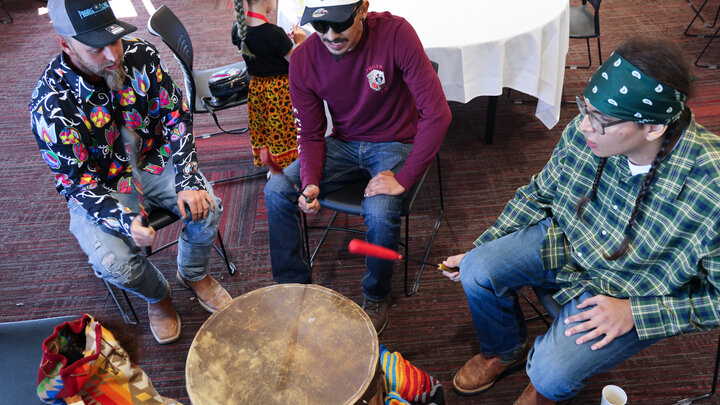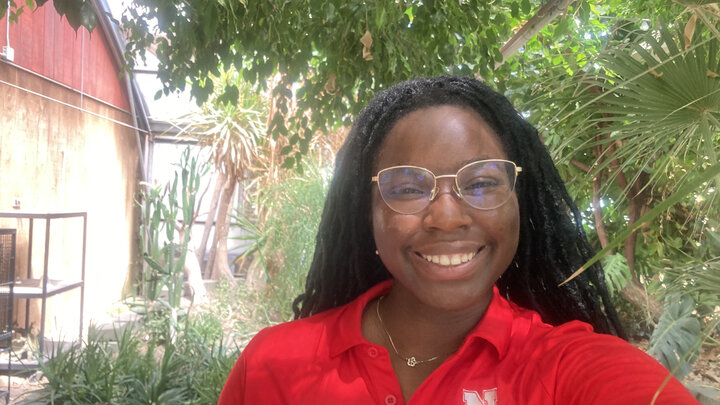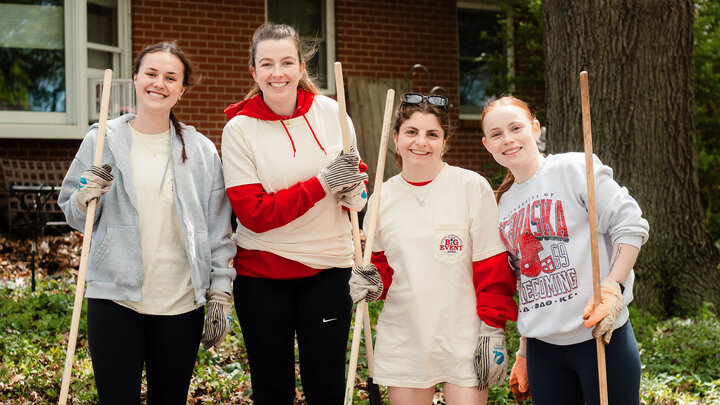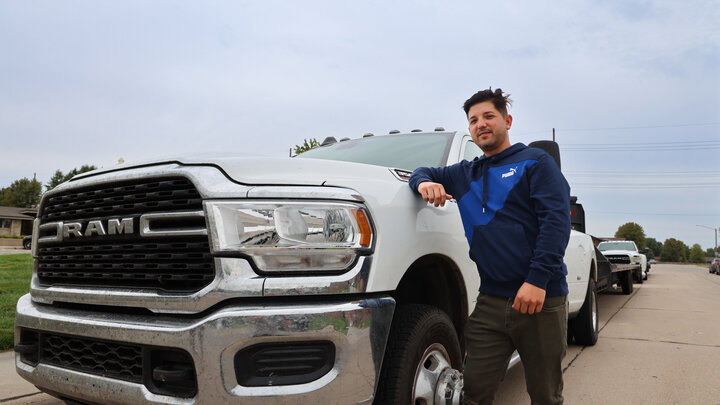The University of Nebraska–Lincoln’s Ted Hibbeler and Nikki Menard have established the Hoop of Learning program to help Indigenous youth prepare for college.
“If you’re looking at our population, there’s very little college preparation among our students because there’s very little college culture at home,” said Hibbeler, the Rural Prosperity Nebraska Extension educator who leads the Native American Coalition. “What we’re trying to do is build a cohort of Native American students that’s focusing on academic achievement.”
Funded through a U.S. Department of Agriculture grant, Hoop of Learning is a college bridge pathway program between the university, Southeast Community College and Lincoln Public Schools that helps Indigenous 11th and 12th graders prepare for and enroll in college.
“The idea is that we successfully get these kids into UNL and graduated,” said Menard, the program’s coordinator.
The path begins in high school. Students take dual-enrollment courses to earn credit for both high school and college. This semester, the courses include English Composition I and College Success. Upon graduating high school, students receive a scholarship to SCC, plus a $500 per semester stipend for living expenses. After earning an associate’s degree with at least a 2.0 GPA, they transfer to the University of Nebraska–Lincoln to obtain a bachelor’s degree.
While Hoop of Learning classes were held during spring 2024, this semester the program kicked off with an all-day event that included multiple workshops on college readiness, speakers from the College of Agricultural Sciences and Natural Resources and a cultural celebration with honor songs performed by a Native drum group.
“I really enjoy it,” said Lonny, a senior at Lincoln Northeast High School. “I like the environment. I like the energy. This has been a great experience so far for me. I was in the first (workshop), where you learn about college — how to apply — and that really helped me and pointed me to a direction of where I’m at and where I can go.”
Currently 18 students are enrolled in the program, with more on the wait list, Menard said.
“It’s going to be a really strong group of students,” she said. “They’re learning about their culture and their history, and getting some credits knocked out at the same time.”
Amalia, a sophomore at Lincoln Northwest High School, joined the program last spring. She enjoyed it so much, she said, that she returned this semester and plans to continue participating through the rest of high school.
“I’ll be able to go into freshman year of college as a transfer student and not have to do freshman year,” she said.
Having also participated in the Indigenous Youth Food Sovereignty program, Amalia values the practical academic experience and the ties to her Indigenous culture.
“This feels a lot more personal because, normally, when you go [to academic advising], it’s kind of like just trying to push you along,” she said. “Here, because the people that are talking are Native, there’s a lot more understanding, and it’s a lot more personalized. There is more of that academic-based sort of thing, but there is a lot of cultural studies, too.”
The Hoop of Learning program began in 1995 under Hibbeler, who worked as the director of the Native American Education Program in Phoenix, Arizona. Hibbeler ran the program for 20 years, collaborating between the urban high schools in Phoenix and Phoenix College and expanding the program to the entire Maricopa Community Colleges system, before moving to Nebraska to work as Nebraska Extension’s Native tribal coordinator.
"I named it the Hoop of Learning program based on the Lakota medicine wheel symbol," Hibbeler said. "This symbol represents the four directions, four stages of life, and the four seasons of the year that we experience in this world. The circle is an Indigenous symbol for inclusion and equity, as well."
Because of an agreement between the University of Nebraska–Lincoln and SCC, credits and degrees earned at the community college will transfer over directly to the university, allowing students to continue their academic path and proceed toward a bachelor’s degree and beyond. Through Hoop of Learning, that path will not only prepare students for academic and career success but help them maintain a relationship with their cultural traditions and history.
“The students were really, really excited to be learning about themselves, their culture, their histories and their languages,” Hibbeler said. “And along with that, they’re going to get college credit and high school credit.”




